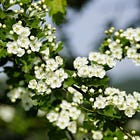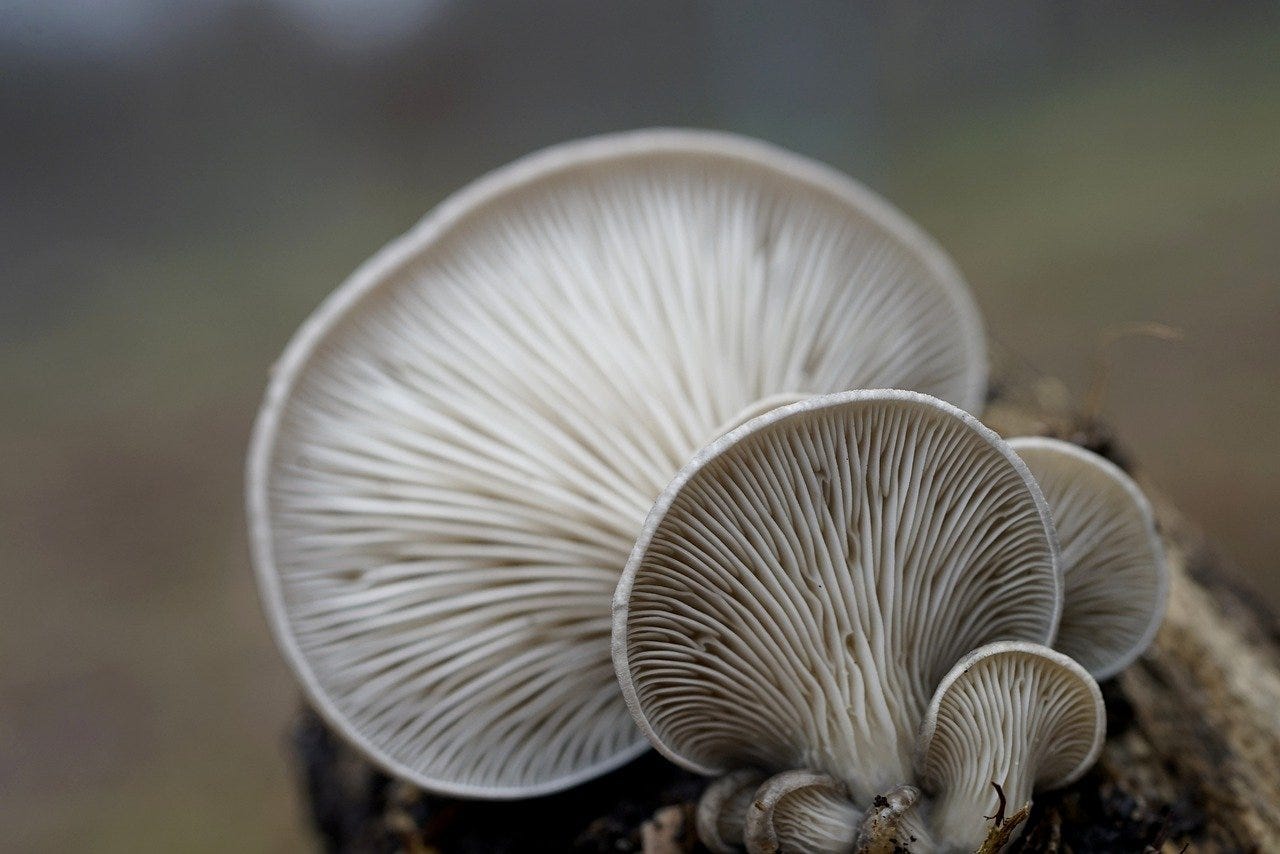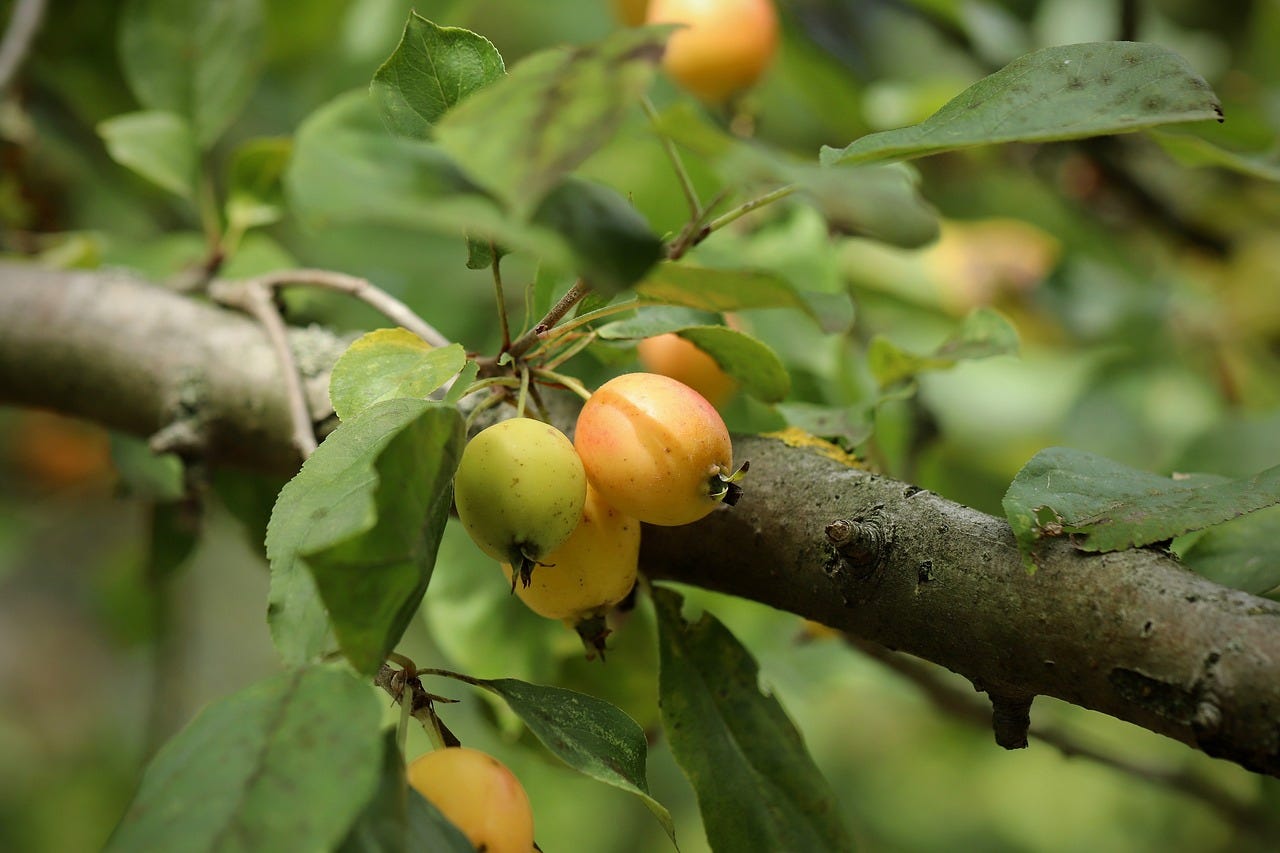Haikus of a Forager III
Even more poems and reflections from nature.
Time to make it a trilogy.
With spring on the horizon, I felt called to do another round of Haikus of a Forager, honouring some of my favourite foods to forage with a little poem for each. It’s just one little way I like to reconnect with nature - something I feel humanity is increasingly (and inherently!) in need of. Furthermore, these instalments provide me—and by extension, you—a respite from some of the more turbulent subject matters I cover in my poetry. Nature is a universal, and I’d love to see you share any of your foraging experiences in the comments and connect with the other readers of this piece.
If you missed the last two instalments in this ongoing series, you can check them out below, although they’re not a prerequisite for this piece:
Puffball Mushroom
Out of the decay,
Fungus begins to grow, then—
Explode into life.
Foraging can give great opportunities to make connections. I had a great bonding experience with a friend’s housemate over mushrooms - specifically, they had collected some puffball mushrooms for the first time and were exploring how to prepare them. Having collected and cooked my own puffballs in the past, I suggested sauteing them in butter. We ended up with a wonderful dish of homemade butternut squash soup and the sauteed mushrooms on the side for those “daring” enough to try them. Those who didn’t have any severely missed out.
Blackberry
Edges of school fields,
full of berries of wisdom.
Here, pupils learn more.
In a way, blackberries represent the very beginnings of my foraging journey. I have fond memories of going down to the hedgerows that lined the school fields as a kid and picking tubs and tubs of blackberries - as many other parents and their kids did - to combine with apples from the garden to make crumble. They certainly feel like one of the easiest and most familiar foraged goods to identify. Yet, each year, it feels like I’ve seen fewer and fewer families pick blackberries from those bushes. I think it’s time to reverse this trend.
Oyster Mushroom
Trees expire; mushrooms,
With the silkiest of gills
Then breathe forest air.
I’ve only ever found wild oyster mushrooms once—and I will never forget it. Taking a path though a steep, wooded hillside, following a small brook, I came to a point on the stream with a small fallen branch straddling across the river. From it, some perfect oyster mushrooms grew, like decorations across the arch of the wood. I took them home and lightly fried them in butter to eat with salmon and eggs. That was a good meal.
Sweet Chestnut
Fallen from a height,
A spiky exterior
Hides a heart inside.
Blackberries may have been the beginning of my foraging journey, but it was sweet chestnuts that were the beginning of my “wild food” journey. My grandparents have a huge sweet chestnut tree in their back garden, and I have memories from growing up of taking some of these chestnuts and roasting them in a woodburner. I’ve since done the same with wild foraged chestnuts to recreate that experience—and I love it just as much every time.
Rowanberry
Bordering the town,
Keeping the witches away
Letting the birds stay.
Admittedly, every time I’ve foraged rowanberries with the intent of making rowanberry jam, I’ve never actually gotten round to using them before they go bad. I’ve tried other people’s rowanberry jam before which has been excellent, so it is very much something that’s still on my list to attempt.
Dandelion
Look, from out the cracks!
It’s the roar of a lion
You cannot keep down
I feel like there’s lots of jokes in comedies and popular culture about dandelions being a poor man’s food. Yet, with every part of a dandelion being edible, I’ve found inventive and tasty ways of being able to use them, such as adding the leaves into pesto or using the petals as garnish. Next on my list to try is dandelion root tea.
Crabapple
Nature is healing,
For a crabapple a day
Keeps doctors away.
I remember once my dad fed a duck a whole crabapple and it started choking. Not only was it sad to see a duck choking, it was also a sad end for a perfectly good crabapple that I could have added to a crumble or made a jelly from. Thankfully the duck survived, but I highly doubt he enjoyed that crabapple as much as I would have had.
Bladderwrack
The abundan-sea:
There grows everything we need
Within its currents.
It is said that all seaweeds are edible. That doesn’t mean they’re all enjoyable to eat, however. I’ve only ever tested foraging a little bit of bladderwrack to see what it would be like as a powdered supplement added in to things. It was fine, but I’m definitely keen to see how it’ll work in something like a Japanese-style soup. Because seaweeds haven’t gone through the industrialised farming that most land crops have, they retain a large amount of vitamins, minerals and antioxidants that are lost even in many organic veg varieties due to the degrading soil quality. This is less the case for seaweeds though, which now exist as one of the only significant sources of iodine in our diets. Click here for an excellent conversation between dentist Dr Elmar Jung and naturopath Roderick Lane discussing the significance of this.
Thank you for taking the time to read this piece. I hope it inspired something within you.
With gratitude,
Tom














Thank you, I really enjoyed the photos, the poetry, humour and wholesome moments shared.
I'm also inspired to forage some Rowanberries this year, which grow in abundance around here.
Oh, and I didn't realise Crabapples can be turned into jam, I thought they were just decoration.
My name means "Crabapple" in German :-)
Loved these. The photos and the poems are stunning. Thank you.